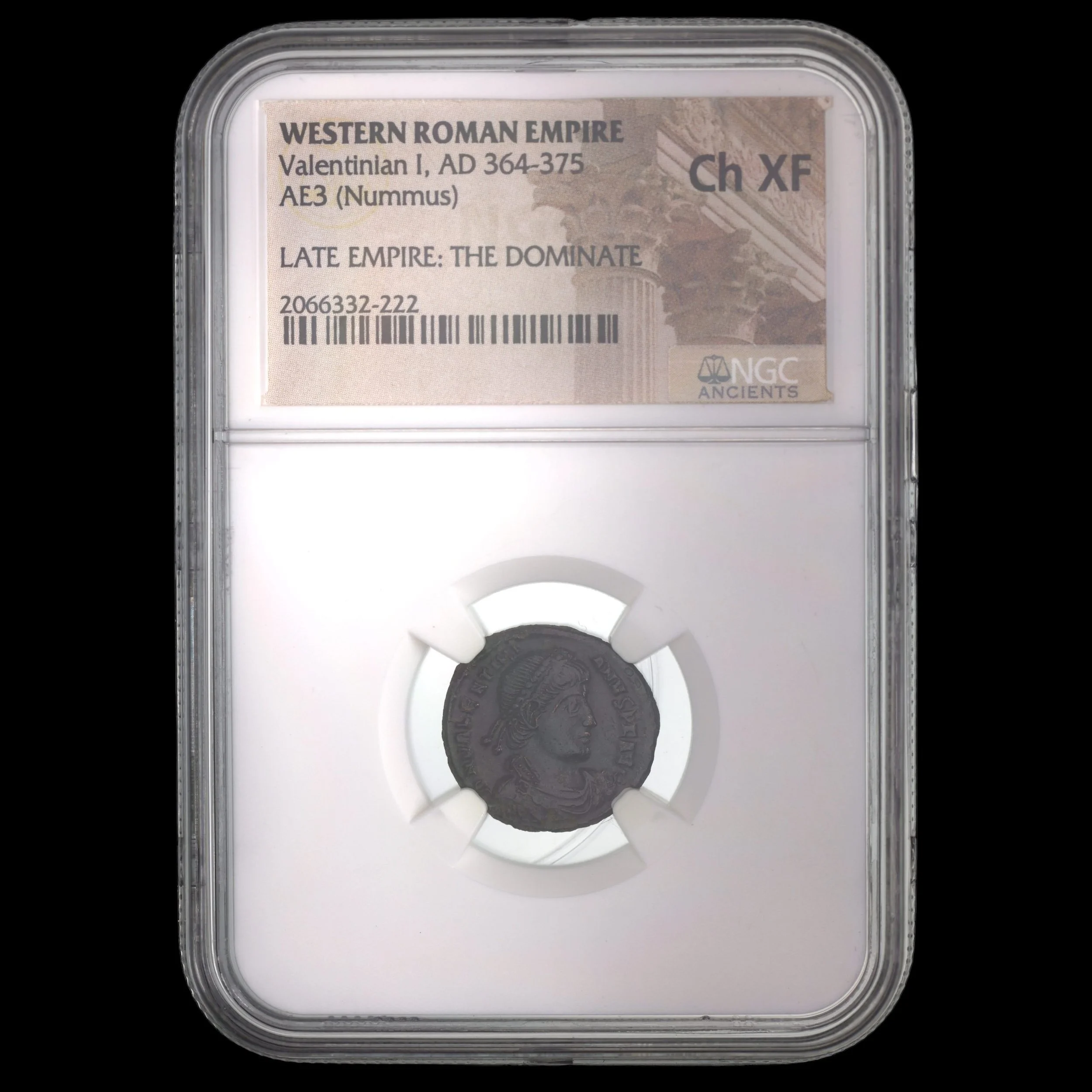 Image 1 of 7
Image 1 of 7

 Image 2 of 7
Image 2 of 7

 Image 3 of 7
Image 3 of 7

 Image 4 of 7
Image 4 of 7

 Image 5 of 7
Image 5 of 7

 Image 6 of 7
Image 6 of 7

 Image 7 of 7
Image 7 of 7








Roman Silver Antoninianus of Postumus (about 1,756-1,765 years ago)
The coins shown are representative examples of the grade and type, but not the actual specimens for sale. For details on NGC’s grading standards and definitions, please refer to our NGC Grading page.
This silver-washed coin known as an antoninianus was issued by Postumus, founder and first emperor of the breakaway Gallic Empire during the Crisis of the Third Century. The antoninianus was a double denarius introduced earlier in the century to deal with economic pressures and inflation affecting the Roman monetary system.
Coin Description:
Front side: Portrait of Emperor Postumus with a radiate crown (distinguishing the antoninianus denomination) and Latin inscriptions of his name and titles
Back side: Likely depicts Roman deities, personifications like Peace (Pax) or Fidelity (Fides), or military symbols relevant to Postumus's rule
Technical Details:
Silver-washed bronze composition (by this period, the antoninianus contained minimal silver)
Antoninianus denomination (nominally worth two denarii)
NGC certified (Numismatic Guaranty Company authentication)
Minted between 260-269 CE
Condition as noted in NGC slab
Historical Significance:
Postumus exemplified the social mobility possible within the Roman military system, rising from humble origins to command significant forces in the western provinces. In 260 CE, his troops proclaimed him emperor, establishing the breakaway Gallic Empire that encompassed modern-day France, Britain, Spain, and parts of Germany. Rather than marching on Rome to claim the entire empire, Postumus focused on defending his territories against Germanic invasions while maintaining Roman institutions and culture. For nearly a decade, he successfully governed this western realm as a separate Roman state with its own senate, consuls, and praetorian guard. His assassination in 269 CE by his own soldiers, who were upset when denied permission to plunder a rebellious city, began the decline of the Gallic Empire, which was eventually reabsorbed into the Roman Empire by 274 CE.
The coins shown are representative examples of the grade and type, but not the actual specimens for sale. For details on NGC’s grading standards and definitions, please refer to our NGC Grading page.
This silver-washed coin known as an antoninianus was issued by Postumus, founder and first emperor of the breakaway Gallic Empire during the Crisis of the Third Century. The antoninianus was a double denarius introduced earlier in the century to deal with economic pressures and inflation affecting the Roman monetary system.
Coin Description:
Front side: Portrait of Emperor Postumus with a radiate crown (distinguishing the antoninianus denomination) and Latin inscriptions of his name and titles
Back side: Likely depicts Roman deities, personifications like Peace (Pax) or Fidelity (Fides), or military symbols relevant to Postumus's rule
Technical Details:
Silver-washed bronze composition (by this period, the antoninianus contained minimal silver)
Antoninianus denomination (nominally worth two denarii)
NGC certified (Numismatic Guaranty Company authentication)
Minted between 260-269 CE
Condition as noted in NGC slab
Historical Significance:
Postumus exemplified the social mobility possible within the Roman military system, rising from humble origins to command significant forces in the western provinces. In 260 CE, his troops proclaimed him emperor, establishing the breakaway Gallic Empire that encompassed modern-day France, Britain, Spain, and parts of Germany. Rather than marching on Rome to claim the entire empire, Postumus focused on defending his territories against Germanic invasions while maintaining Roman institutions and culture. For nearly a decade, he successfully governed this western realm as a separate Roman state with its own senate, consuls, and praetorian guard. His assassination in 269 CE by his own soldiers, who were upset when denied permission to plunder a rebellious city, began the decline of the Gallic Empire, which was eventually reabsorbed into the Roman Empire by 274 CE.

































